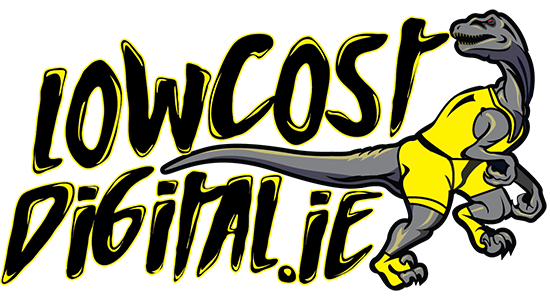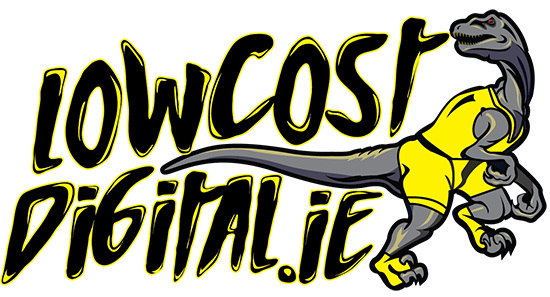Key Highlights
- The web design and development process involves project goals, planning the website layout, designing visual elements, developing the backend, testing, and launching the website.
- Web design is important for creating a user-friendly interface and providing a positive user experience.
- Effective web development includes using a content management system, involving backend developers, and using programming languages that suit the project.
- Preparing for the web design and development journey involves project management, assembling a development team, and understanding the different phases of development.
- Essential tools and resources for beginners include content creation software, web content management systems, and software development tools.
- Choosing the right platform, such as www.lowcostdigital.ie, is crucial for content management, website design, and user experience.
- The step-by-step guide to simplifying web design and development includes defining the website’s purpose and goals, planning the site layout and structure, designing visual elements, developing the backend, and testing and launching the website.
- Web design and development should prioritize user experience, address current trends and practices, optimize the website for search engines, and ensure web security and regular maintenance.
- FAQs: Updating the website regularly ensures website health and follows best practices. It is possible to design and develop a website with no prior experience by utilizing resources and learning. Important trends in web design and development for beginners include current practices and emerging technologies.
Introduction
The process of web design and development plays a crucial role in creating effective and user-friendly websites. From defining project goals to planning the website layout, designing visual elements, developing the backend, and launching the website, each step is important in creating a successful online presence. In today’s digital world, where user experience is paramount, it is essential to understand the basics of web design and development to create websites that meet the needs and expectations of users.
Web design involves creating the user interface and determining how users interact with the web pages. It focuses on visual elements, layout, color schemes, and typography to create an appealing and engaging website. On the other hand, web development involves the programming and coding that bring the website to life. It includes backend development, database management, and integration of various functionalities.
By understanding the key components and best practices of web design and development, businesses can create websites that not only attract visitors but also provide a seamless user experience. This blog will guide you through the process of simplifying web design and development, providing valuable insights and practical tips to help you create a successful website. www.lowcostdigital.ie
Understanding the Basics of Web Design and Development
Before diving into the web design and development process, it is essential to have a basic understanding of these two concepts. Web development refers to the process of building and maintaining websites. It involves programming and coding using languages such as HTML, CSS, and JavaScript. Web design, on the other hand, focuses on the visual elements and user interface of the website. It includes creating layouts, choosing color schemes, selecting fonts, and designing graphics. Both web development and web design are essential components of any development project, working together to create an effective and user-friendly website.
The Importance of Web Design in Today’s Digital World
Web design plays a crucial role in today’s digital world, where user experience is a top priority. A well-designed website not only attracts visitors but also keeps them engaged, ultimately leading to business growth. The user interface, or UI, is the visual representation of the website, including the layout, navigation, and design elements. It determines how users interact with the web pages and influences their overall experience. A user-friendly UI enhances the usability of the website, making it easy for visitors to navigate and find the information they need. The user experience, or UX, focuses on the overall experience users have while interacting with the website. A good UX ensures that users have a positive experience, find what they are looking for, and are encouraged to take desired actions. By prioritizing web design and creating a visually appealing and user-friendly interface, businesses can enhance the user experience and achieve their website goals. www.lowcostdigital.ie
Key Components of Effective Web Development
Effective web development involves various components that work together to create a functional and reliable website. One key component is the content management system (CMS), which allows businesses to manage and update their website content easily. A CMS provides a user-friendly interface for adding new pages, updating existing content, and managing media files. It streamlines the content creation process and ensures that the website is always up-to-date. Backend developers play a crucial role in web development as they handle the server-side programming and integration of databases. They are responsible for building the functionality of the website, ensuring smooth data management and user interactions. Programming languages such as HTML, CSS, JavaScript, and PHP are used in web development to create interactive and dynamic web pages. Choosing the right programming languages and frameworks is important to ensure the website meets the project’s requirements and functions effectively.
Preparing for Your Web Design and Development Journey
Preparing for the web design and development journey is crucial for a smooth and successful project. Project management plays a key role in coordinating the various tasks and ensuring that the project stays on track. It involves setting goals, defining timelines, and managing resources effectively. Assembling a skilled development team is also important, including web designers, developers, and content creators. Each team member brings unique expertise and contributes to different aspects of the project. Understanding the different phases of development, such as planning, design, development, testing, and launching, helps businesses prepare for what lies ahead and ensures a structured and efficient process. www.lowcostdigital.ie
Essential Tools and Resources for Beginners
For beginners venturing into web design and development, having access to the right tools and resources is essential. These tools can simplify the process and help beginners create professional-looking websites. Some essential tools and resources include:
- Content creation software: Tools like Adobe Photoshop and Illustrator are essential for creating graphics and editing images.
- Web content management systems: Platforms like WordPress and Wix provide user-friendly interfaces for managing website content.
- Software development tools: Integrated development environments (IDEs) like Visual Studio and Sublime Text help developers write and test code efficiently.
- Online tutorials and courses: Websites like Codecademy and Udemy offer comprehensive courses and tutorials for learning web design and development.
- Online communities and forums: Joining online communities like Stack Overflow and Reddit can provide valuable insights and support from experienced web designers and developers.
Choosing the Right Platform: Why www.lowcostdigital.ie Stands Out
Choosing the right platform for your website is crucial for its success. www.lowcostdigital.ie is a standout option for several reasons. Firstly, it offers a user-friendly content management system that allows businesses to easily update and manage their website content. This ensures that the website is always up-to-date and provides a positive user experience. Secondly, www.lowcostdigital.ie provides excellent website design services. Their team of experienced designers creates visually appealing and user-friendly websites that align with the client’s brand and goals. Finally, www.lowcostdigital.ie prioritizes user experience, ensuring that the website is intuitive, easy to navigate, and delivers a seamless browsing experience. By choosing www.lowcostdigital.ie, businesses can create a professional and effective website that attracts and engages visitors.
A Step-by-Step Guide to Simplifying Web Design and Development
The web design and development process can seem overwhelming, but by breaking it down into step-by-step tasks, it becomes more manageable. This guide will take you through each stage of the process, providing valuable insights and practical tips to simplify web design and development. The first step is to define your website’s purpose and goals. This involves understanding your target audience, determining what information or services you want to provide, and setting clear objectives for your website. By defining your goals from the outset, you can ensure that your web design and development efforts are focused and aligned with your overall business objectives. www.lowcostdigital.ie
Step 1: Defining Your Website’s Purpose and Goals
The first step in the web design and development process is to define your website’s purpose and goals. This involves understanding your target audience and their needs, as well as identifying the specific information or services you want to provide on your website. By defining your target audience, you can tailor your content and design to meet their needs and preferences. It’s also important to develop a content strategy that aligns with your business goals and objectives. This involves determining what type of content you will create, how often you will update it, and how it will be organized and presented on your website. By clearly defining your website’s purpose and goals, you can ensure that your web design and development efforts are effective and focused.
Step 2: Planning Your Site Layout and Structure
Once you have defined your website’s purpose and goals, the next step is to plan your site layout and structure. This involves determining how your website will be organized and how users will navigate through it. A well-planned site layout ensures that users can find the information they are looking for easily and quickly. Consider the following factors when planning your site layout:
- Navigation: Design a clear and intuitive navigation menu that allows users to easily move between pages.
- Layout: Determine the overall layout of your website, including the placement of key elements such as the logo, menu, and content sections.
- Home page: Create a compelling and engaging home page that provides an overview of your website and encourages users to explore further. By carefully planning your site layout and structure, you can create a user-friendly and organized website that meets the needs of your target audience.
Step 3: Designing Your Website’s Visual Elements
The visual elements of your website play a crucial role in creating a positive user experience and conveying your brand’s identity. When designing your website’s visual elements, consider the following factors:
- Color palette: Choose a color palette that aligns with your brand and creates a cohesive and visually pleasing website.
- Design elements: Incorporate design elements such as images, icons, and graphics that enhance the visual appeal and usability of your website.
- Font: Select a font that is legible and consistent with your brand’s tone and style.
- By carefully designing your website’s visual elements, you can create a visually appealing and engaging website that resonates with your target audience. www.lowcostdigital.ie
Step 4: Developing the Backend of Your Website
The backend of your website is responsible for the functionality and performance of your website. It includes the server, database, and backend code that power your website. When developing the backend of your website, consider the following factors:
- Server: Choose a reliable and scalable server that can handle the traffic and demands of your website.
- Database: Design and implement a database structure that efficiently stores and retrieves data for your website.
- Backend developers: Work with experienced backend developers who can write clean and efficient code to ensure the smooth operation of your website.
- By developing a robust and efficient backend, you can create a website that is reliable, secure, and performs well for your users.
Step 5: Testing and Launching Your Website
Before launching your website, it is important to thoroughly test it to ensure that it functions properly and provides a seamless user experience. Testing involves checking for any errors or bugs, testing the website’s performance and compatibility across different devices and browsers, and gathering feedback from users. Use analytics tools to track user behavior and make data-driven decisions to improve your website’s performance. Once testing is complete, you can confidently launch your website and make it available to your target audience. By testing and launching your website, you can ensure that it meets the highest standards of quality and provides a positive user experience. www.lowcostdigital.ie
Key Takeaways on Web Design and Development
In conclusion, web design and development is a complex process that involves various stages and components. By understanding the basics of web design and development, preparing for the journey, and following a step-by-step guide, businesses can simplify the process and create effective and user-friendly websites. Key takeaways include:
- Defining clear goals and objectives for your website
- Planning the site layout and structure
- Designing visually appealing and engaging elements
- Developing a robust backend
- Thoroughly testing and launching your website
- By following these best practices, businesses can create successful websites that attract and engage users.
Summarizing the State of Knowledge in Web Design and Development
The field of web design and development is constantly evolving, with new trends, technologies, and best practices emerging. Web designers and developers play a crucial role in staying updated with the latest advancements and incorporating them into their work. By staying informed about current trends and practices, web designers and developers can create websites that are visually appealing, user-friendly, and aligned with the goals of their stakeholders. It is important for stakeholders to understand the value of web design and development and to collaborate closely with web designers and developers to ensure the success of their projects. www.lowcostdigital.ie
Addressing What is Known and Unknown in the Field
When embarking on a new website design and development project, there are known factors and unknown challenges that businesses may face. While businesses can create a detailed plan and follow best practices, there may still be unforeseen obstacles and challenges along the way. It is important to approach the project with flexibility and adaptability, being prepared to address and overcome any unknown challenges that may arise. By working closely with web designers and developers, businesses can navigate these challenges and create successful websites that meet their goals and objectives.
Enhancing User Experience Through Effective Design
Effective web design plays a crucial role in enhancing the user experience of a website. User experience (UX) encompasses the overall experience that users have while interacting with a website, including how easy it is to navigate, how quickly it loads, and how well it meets their needs. User interface (UI) design focuses on the visual elements and layout of a website, ensuring that it is visually appealing and intuitive to use. By prioritizing UX and UI design, businesses can create web applications that provide a seamless and enjoyable user experience. www.lowcostdigital.ie
The Role of User Interface (UI) in Web Design
The user interface (UI) is a key component of web design that focuses on the visual elements and layout of a website. It determines how users interact with the web pages and influences their overall experience. A well-designed UI enhances the usability of the website, making it easy for users to navigate and find the information they need. Elements such as navigation menus, buttons, and forms are designed to be intuitive and visually appealing. By creating a user-friendly UI, businesses can improve the overall user experience and increase user satisfaction.
Incorporating User Experience (UX) Principles for Better Engagement
User experience (UX) design focuses on creating a positive and engaging experience for users while they interact with a website. By incorporating UX principles into web design, businesses can enhance user engagement and satisfaction. Some key principles include:
- Understanding the needs and preferences of the target audience.
- Designing intuitive and user-friendly navigation.
- Providing relevant and valuable content.
- Optimizing website performance and load times.
- Conducting user testing and gathering feedback for continuous improvement.
- By prioritizing UX principles, businesses can create websites that deliver a seamless and enjoyable experience for their users.
Optimizing Your Website for Search Engines
Optimizing your website for search engines is essential for improving your online visibility and attracting organic traffic. Search engine optimization (SEO) involves various strategies and techniques to improve your website’s rankings in search engine results pages. Key elements of SEO include keyword research, on-page optimization, link building, and content strategy. By implementing effective SEO practices, businesses can increase their website’s visibility and reach their target audience. A well-planned content strategy that incorporates relevant keywords and valuable content can help improve search engine rankings and drive organic traffic to the website. www.lowcostdigital.ie
Understanding the Basics of SEO in Web Development
SEO is an important aspect of web development that involves optimizing a website to improve its visibility and rankings on search engine results pages. Understanding the basics of SEO is crucial for creating a website that is search engine friendly. Some key factors to consider include:
- Keyword research: Identifying relevant keywords that align with your target audience’s search queries.
- On-page optimization: Optimizing the website’s meta tags, headers, and content to include targeted keywords.
- URL structure: Creating SEO-friendly URLs that are descriptive and contain relevant keywords.
- Site speed: Ensuring that the website loads quickly and provides a smooth user experience.
- By incorporating these SEO basics into web development, businesses can improve their website’s visibility and attract organic traffic from search engines.
Practical Tips for Improving Your Website’s SEO
Improving your website’s SEO involves implementing various strategies and techniques to enhance its visibility and rankings on search engine results pages. Here are some practical tips for improving your website’s SEO:
- Conduct keyword research to identify relevant keywords and incorporate them into your website’s content.
- Optimize your website’s meta tags, including the title tag and meta description, to include targeted keywords.
- Create high-quality and valuable content that is optimized for search engines.
- Build high-quality backlinks from reputable and authoritative websites.
- Make sure your website is mobile-friendly and optimized for mobile devices.
- Regularly monitor your website’s performance using analytics tools and make necessary adjustments to improve its SEO.
- | Column Name A | Column Name B |
- |————————–|—————————————————————–|
- | Conduct keyword research | Identify relevant keywords for your website content |
- | Optimize meta tags | Include targeted keywords in your website’s meta tags |
- | Create valuable content | Produce high-quality and informative content for your website |
- | Build backlinks | Get high-quality links from other reputable websites |
- | Optimize for mobile | Ensure your website is mobile-friendly and responsive |
- | Monitor performance | Track your website’s performance using analytics tools |
Keeping Your Website Secure and Reliable
Keeping your website secure and reliable is crucial for protecting your data and maintaining a positive user experience. Web security involves implementing measures to protect your website from hacking, data breaches, and other security threats. It includes using secure hosting, regularly updating software, and implementing strong authentication measures. Regular maintenance and updates are also important to ensure that your website remains reliable and performs optimally. By following best practices for web security and maintenance, businesses can protect their website and provide a secure and reliable experience for users.
Best Practices for Web Security
Implementing best practices for web security is essential for protecting your website and users’ data. Some key best practices include:
- Using secure hosting: Choose a hosting provider that offers robust security measures and regular backups.
- Keeping software updated: Regularly update your website’s software, including content management systems, plugins, and themes, to protect against known vulnerabilities.
- Implementing strong passwords: Use strong and unique passwords for all accounts associated with your website.
- Encrypting data: Implement SSL/TLS certificates to encrypt data transmitted between your website and users’ browsers.
- Regularly backing up data: Perform regular backups of your website’s data to ensure that it can be restored in case of a security incident.
- By following these best practices, businesses can create a secure website that protects user data and provides a safe browsing experience.
Regular Maintenance and Updates for Website Health
Regular maintenance and updates are essential for ensuring the health and optimal performance of a website. During the maintenance phase, businesses should:
- Fix bugs and issues: Regularly monitor your website for any bugs or issues and promptly address them to ensure a smooth user experience.
- Update content: Keep your website’s content up-to-date and relevant to provide value to users.
- Perform backups: Regularly back up your website’s data to protect against data loss and ensure that it can be restored in case of an issue.
- Install security updates: Stay up-to-date with the latest security patches and updates to protect against vulnerabilities and security threats.
- By regularly maintaining and updating your website, you can ensure its health and longevity, providing a positive user experience for your visitors.
Conclusion
In conclusion, simplifying the web design and development process is crucial for creating a user-friendly and engaging online presence. By understanding the basics, preparing effectively, and following a step-by-step guide, you can navigate this journey successfully. Remember, optimizing your website for search engines, enhancing user experience, and maintaining security are key elements for a successful online presence. Stay updated with the latest trends and technologies to ensure your website remains competitive and relevant in today’s digital world. Start your web design and development journey on the right foot with the right tools and resources. www.lowcostdigital.ie
Frequently Asked Questions
How Often Should I Update My Website?
Regularly updating your website is crucial for its health and performance. It is recommended to update your website’s content, software, and security measures regularly to ensure that it remains secure, up-to-date, and relevant to your target audience. Regular maintenance and updates are best practices for website health and longevity.
Can I Design and Develop a Website with No Prior Experience?
Yes, it is possible to design and develop a website with no prior experience. There are numerous resources available online, such as tutorials, courses, and forums, that can help beginners learn web design and development. By utilizing these resources and investing time in learning, beginners can acquire the skills and knowledge needed to create a website.
What Are the Most Important Trends in Web Design and Development for Beginners?
Some important trends in web design and development for beginners include:
- Responsive design: Creating websites that are optimized for different devices and screen sizes.
- Minimalism: Using clean and simple designs that prioritize content and user experience.
- Mobile-first approach: Designing websites with mobile users in mind as mobile traffic continues to grow.
- Accessibility: Ensuring that websites are accessible to users with disabilities.
- By staying updated with current practices and trends, beginners can create modern and effective websites.












